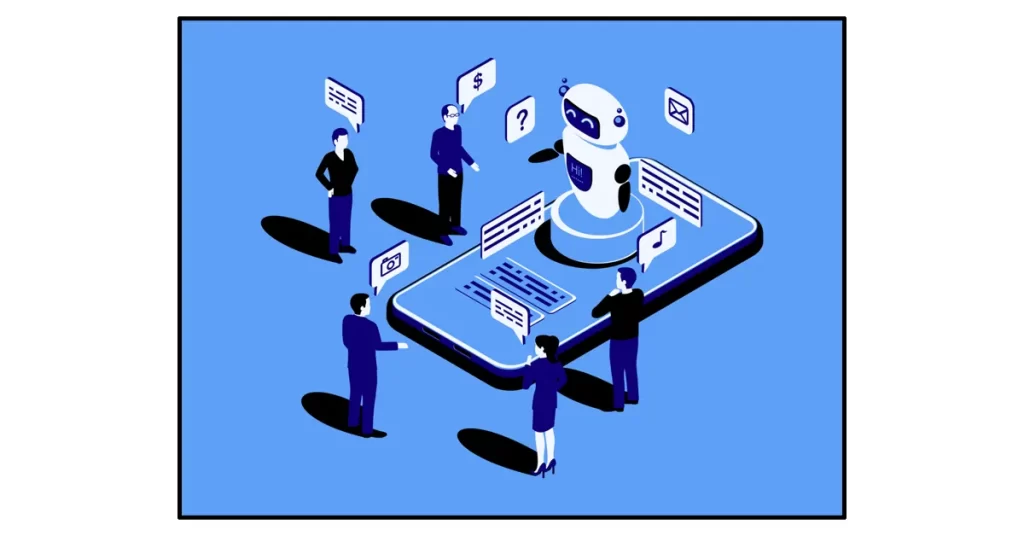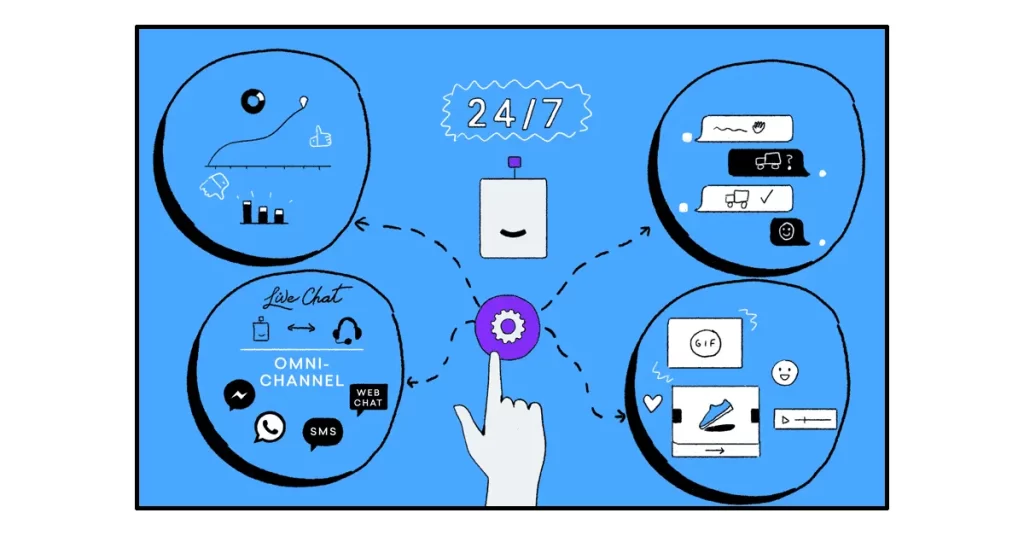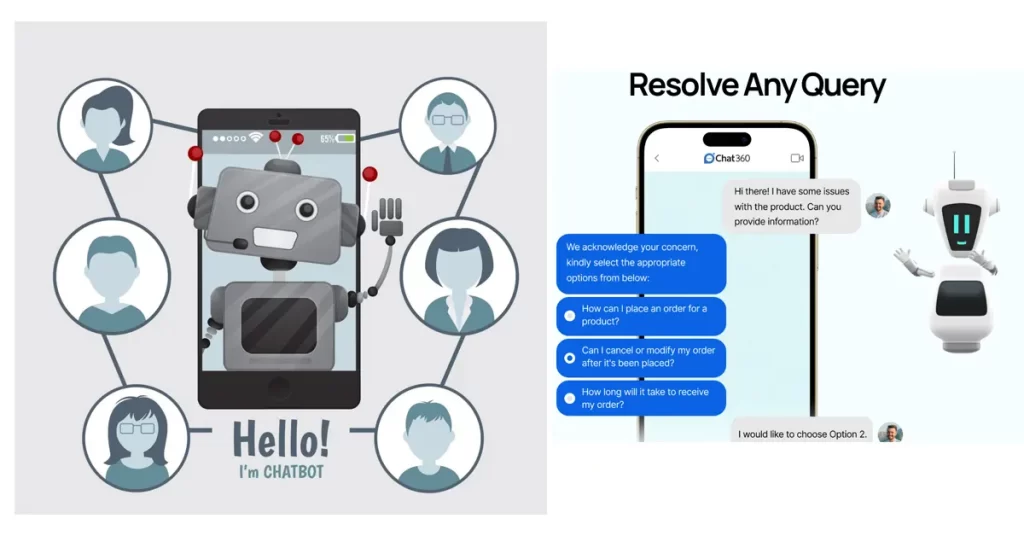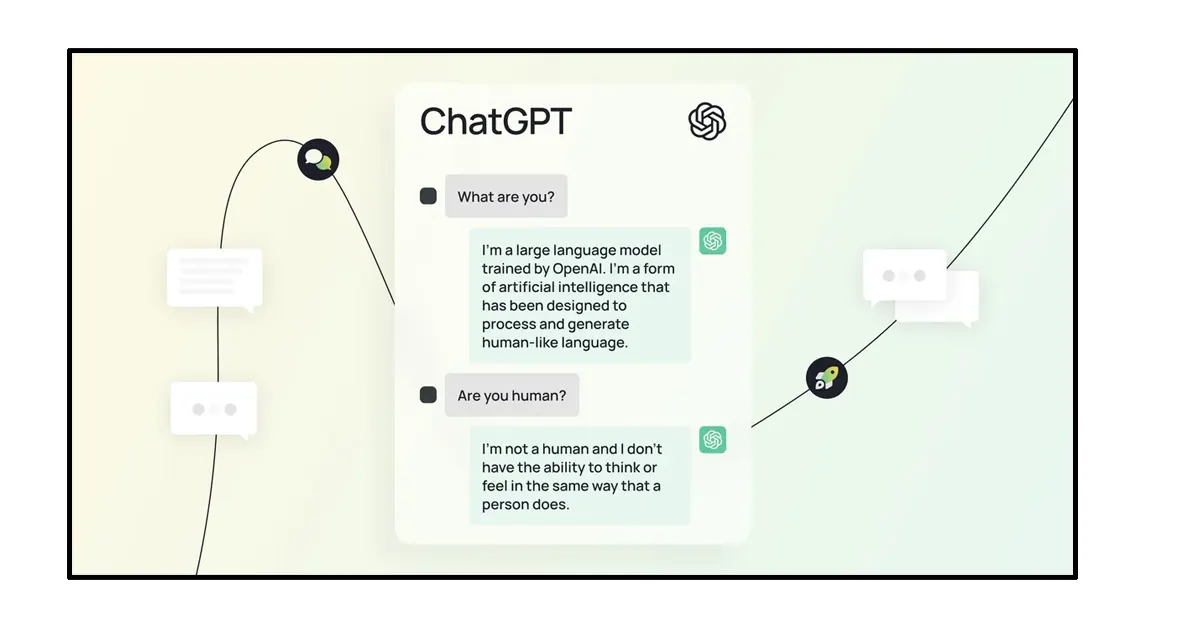AI-Powered ChatGPT: AIPRM Explained has become increasingly popular in customer service, revolutionizing the way businesses interact with their customers. These ChatGPTs, powered by artificial intelligence technology, are designed to simulate human conversation and provide quick and accurate responses to customer queries. Understanding the role of AI-powered ChatGPTin in customer satisfaction is crucial for businesses looking to enhance their customer service experience.
Understanding AI-Powered ChatGPTand and Their Role in Customer Satisfaction
Table of Contents
AI-powered ChatGPTare computer programs use artificial intelligence technology to interact with customers conversationally. These ChatGPTares are designed to understand natural language and provide relevant and accurate responses to customer queries. They work by analyzing the input from customers, using machine learning algorithms to understand the intent behind the query, and then generating an appropriate response.
The benefits of using AI-powered ChatGPT for customer service are numerous. Firstly, they are cost-effective compared to hiring and training human customer service representatives. ChatGPT can handle a large volume of queries simultaneously, reducing the need for additional staff. Secondly, they are available 24/7, providing round-the-clock support to customers. This ensures that customers can receive assistance at any time, increasing their satisfaction with the service. Additionally, chatbots are scalable, meaning they can handle an increasing number of queries without compromising on response time or accuracy. Lastly, chatbots provide consistency in responses, ensuring that all customers receive the same level of service regardless of the time or day.
The Benefits of Using AI-Powered ChatGPTfor Customer Service

One of the major benefits of using AI-powered chatbots for customer service is cost-effectiveness. Hiring and training human customer service representatives can be expensive, especially for businesses that receive a large volume of queries. Chatbots eliminate the need for additional staff, reducing costs while still providing efficient and effective customer support.
Another benefit is 24/7 availability. Unlike human representatives, who have limited working hours, chatbots can provide support at any time of the day or night. This ensures that customers can receive assistance whenever they need it, increasing their satisfaction with the service.
Scalability is also a key advantage of AI-powered chatbots. As businesses grow and receive more queries, chatbots can handle the increased volume without compromising on response time or accuracy. This ensures that customers receive prompt and accurate responses, further enhancing their satisfaction with the service.
Consistency in responses is another benefit of using AI-powered chatbots. Unlike human representatives, who may provide different answers to the same query, chatbots provide consistent responses based on predefined rules and algorithms. This ensures that all customers receive the same level of service, regardless of the time or day.
How AI-Powered Chatbots Can Improve Customer Experience

| Metrics | Description |
|---|---|
| Response Time | AI-powered chatbots can provide instant responses to customer queries, reducing response time and improving customer satisfaction. |
| 24/7 Availability | Chatbots can be available round the clock, providing customers with assistance at any time of the day, and improving the customer experience. |
| Personalization | AI-powered chatbots can personalize customer interactions by analyzing customer data and providing tailored responses, improving customer engagement. |
| Efficiency | Chatbots can handle multiple customer queries simultaneously, improving efficiency and reducing wait times for customers. |
| Cost Savings | AI-powered chatbots can reduce the need for human customer service representatives, resulting in cost savings for businesses. |
| Accuracy | Chatbots can provide accurate responses to customer queries by analyzing data and using machine learning algorithms, improving customer trust and loyalty. |
AI-powered chatbots have the potential to greatly improve the customer experience. One way they do this is through personalization. Chatbots can use customer data to provide customized responses, tailoring their answers to the specific needs and preferences of each individual customer. This personalized approach makes customers feel valued and understood, enhancing their overall experience with the business.
Another way chatbots improve the customer experience is by providing quick and accurate responses. Unlike human representatives, who may take time to research or consult others for an answer, chatbots can instantly access a vast amount of information and provide accurate responses in real-time. This reduces customer wait times and frustration, leading to a more positive experience.
Multilingual support is another advantage of AI-powered chatbots. With the ability to understand and respond in multiple languages, chatbots can cater to a diverse customer base. This ensures that all customers, regardless of their language preferences, can receive support in their preferred language, further enhancing their experience with the business.
Integration with other channels is also a key benefit of AI-powered chatbots. Chatbots can be seamlessly integrated with other communication channels, such as social media platforms or messaging apps, allowing customers to interact with the business through their preferred channel. This omni-channel approach provides a seamless and consistent experience for customers, further enhancing their overall satisfaction.
The Importance of Personalization in AI-Powered Chatbots

Personalization is a crucial aspect of AI-powered chatbots that greatly contributes to customer satisfaction. By using customer data, chatbots can provide customized responses that are tailored to the specific needs and preferences of each individual customer. This personalized approach makes customers feel valued and understood, enhancing their overall experience with the business.
One way chatbots can personalize responses is by using customer history. By analyzing past interactions and purchase history, chatbots can provide tailored solutions and recommendations to customers. For example, if a customer has previously purchased a certain product, the chatbot can suggest related products or provide information on upcoming promotions. This personalized approach not only enhances the customer experience but also increases the likelihood of repeat purchases and customer loyalty.
Building relationships with customers is another important aspect of personalization in AI-powered chatbots. By using customer data and previous interactions, chatbots can engage in more meaningful conversations with customers, creating a sense of connection and trust. This personalized approach helps to build long-term relationships with customers, leading to increased satisfaction and loyalty.
The Role of Natural Language Processing in AI-Powered Chatbots

Natural Language Processing (NLP) is a key technology that enables AI-powered chatbots to understand and respond to customer queries conversationally. NLP is a branch of artificial intelligence that focuses on the interaction between computers and human language.
NLP allows chatbots to analyze the input from customers, understand the intent behind the query, and generate an appropriate response. This technology enables chatbots to understand natural language, including slang, colloquialisms, and variations in sentence structure. By understanding the context and intent behind customer queries, chatbots can provide more accurate and relevant responses, enhancing the overall customer experience.
Accuracy in responses is crucial for customer satisfaction. NLP technology helps chatbots to accurately interpret and respond to customer queries, reducing the likelihood of misunderstandings or incorrect information. This ensures that customers receive the information they need in a timely and accurate manner, further enhancing their satisfaction with the service.
How AI-Powered Chatbots Can Reduce Response Time and Improve Efficiency
One of the key advantages of AI-powered chatbots is their ability to reduce response time and improve efficiency in customer service. This is achieved through the automation of repetitive tasks, quick and accurate responses, and the ability to handle multiple queries simultaneously.
By automating repetitive tasks, such as answering frequently asked questions or providing basic information, chatbots can free up human representatives to focus on more complex or specialized queries. This reduces response time and improves efficiency, as customers receive prompt and accurate responses without having to wait for a human representative.
Quick and accurate responses are another advantage of AI-powered chatbots. Unlike human representatives, who may take time to research or consult others for an answer, chatbots can instantly access a vast amount of information and provide accurate responses in real-time. This reduces customer wait times and frustration, leading to a more positive experience.
The ability to handle multiple queries simultaneously is another way chatbots improve response time and efficiency. Unlike human representatives, who can only handle one query at a time, chatbots can handle multiple queries simultaneously without compromising on response time or accuracy. This ensures that customers receive prompt assistance, even during peak periods or high volumes of queries.
The Challenges of Implementing AI-Powered Chatbots and How to Overcome Them
While AI-powered chatbots offer numerous benefits for customer service, there are also challenges that businesses may face when implementing them. These challenges include integration with existing systems, ensuring accuracy in responses, training the chatbot to handle complex queries and the importance of continuous improvement.
Integration with existing systems is a common challenge when implementing AI-powered chatbots. Businesses may already have existing customer service systems or databases that need to be integrated with the chatbot. This requires careful planning and coordination to ensure a seamless integration and smooth transition for both customers and employees.
Ensuring accuracy in responses is another challenge. Chatbots rely on predefined rules and algorithms to generate responses, which may not always be accurate or up-to-date. Businesses need to continuously monitor and update the chatbot’s knowledge base to ensure that it provides accurate and relevant information to customers.
Training the chatbot to handle complex queries is another challenge. While chatbots can handle basic queries effectively, they may struggle with more complex or specialized queries that require human judgment or expertise. Businesses need to invest time and resources in training the chatbot to handle these types of queries, ensuring that customers receive accurate and satisfactory responses.
Continuous improvement is also crucial when implementing AI-powered chatbots. Chatbots need to be continuously monitored and updated based on customer feedback and changing business needs. This ensures that the chatbot remains effective and efficient in providing customer support, leading to increased satisfaction.
How to Train AI-Powered Chatbots to Provide Accurate and Relevant Responses

Training AI-powered chatbots to provide accurate and relevant responses requires a combination of data collection and analysis, the use of machine learning algorithms, and continuous monitoring and improvement.
Data collection and analysis are crucial for training chatbots. Businesses need to collect data on customer queries, interactions, and feedback to understand customer needs and preferences. This data can then be analyzed to identify patterns, trends, and areas for improvement. Businesses can train the chatbot to provide more accurate and relevant responses by understanding customer behavior and preferences.
Machine learning algorithms play a key role in training chatbots. These algorithms use the collected data to learn from past interactions and improve their performance over time. By continuously analyzing and learning from customer interactions, chatbots can improve their accuracy and relevance in providing responses.
Continuous monitoring and improvement are essential for training chatbots. Businesses need to regularly review and analyze the performance of the chatbot, using metrics such as response time and customer satisfaction to identify areas for improvement. By continuously monitoring and making adjustments based on customer feedback and changing business needs, chatbots can provide more accurate and relevant responses, leading to increased customer satisfaction.
The Role of Analytics in Measuring the Effectiveness of AI-Powered Chatbots
Analytics plays a crucial role in measuring the effectiveness of AI-powered chatbots. By tracking metrics such as response time, customer satisfaction, and conversion rates, businesses can gain insights into the performance of the chatbot and identify areas for improvement.
Response time is an important metric to track as it directly impacts customer satisfaction. By monitoring response time, businesses can identify bottlenecks or areas where the chatbot may be struggling to provide timely responses. This allows businesses to make adjustments and improve response time, leading to increased customer satisfaction.
Customer satisfaction is another key metric to track. By collecting feedback from customers on their experience with the chatbot, businesses can gain insights into areas where the chatbot may be falling short or areas where it is performing well. This feedback can be used to make improvements and enhance the overall customer experience.
Conversion rates are also important metrics to track. By analyzing how many queries are successfully resolved by the chatbot and how many result in a conversion or sale, businesses can measure the effectiveness of the chatbot in driving business outcomes. This information can be used to make adjustments and optimize the chatbot’s performance.
Analytics also plays a role in identifying areas for improvement. By analyzing data on customer queries, interactions, and feedback, businesses can identify patterns or trends that may indicate areas where the chatbot is struggling or where improvements can be made. This information can then be used to make adjustments and continuously improve the chatbot’s performance.
The Future of AI-Powered Chatbots and Their Impact on Customer Satisfaction
The future of AI-powered chatbots looks promising, with the potential for further advancements in AI technology. As businesses continue to invest in AI-powered chatbots, the technology is expected to become more sophisticated and capable of handling even more complex queries and interactions.
The growing popularity of chatbots in customer service is a testament to their effectiveness in improving customer satisfaction. As businesses increasingly adopt chatbots, customers are becoming more accustomed to interacting with them and are beginning to expect the convenience and efficiency they provide.
The potential for further advancements in AI technology means that chatbots will continue to evolve and improve. This includes advancements in natural language processing, machine learning algorithms, and integration with other systems and channels. These advancements will further enhance the capabilities of chatbots and their ability to provide accurate and relevant responses to customer queries.
Staying up-to-date with the latest trends and developments in AI-powered chatbots is crucial for businesses looking to enhance their customer service experience. By staying informed about new technologies, best practices, and industry trends, businesses can ensure that they are leveraging the full potential of chatbots to improve customer satisfaction.
AI-powered chatbots have become increasingly popular in customer service, offering numerous benefits for businesses looking to enhance their customer service experience. From cost-effectiveness and 24/7 availability to scalability and consistency in responses, chatbots provide a range of advantages that contribute to improved customer satisfaction.
Personalization is a key aspect of AI-powered chatbots that greatly enhances the customer experience. By using customer data and previous interactions, chatbots can provide customized responses tailored to the specific needs and preferences of each individual customer. This personalized approach helps build relationships with customers and increases their overall satisfaction with the service.
Natural language processing plays a crucial role in enabling chatbots to understand and respond to customer queries conversationally. By accurately interpreting and responding to customer queries, chatbots provide quick and accurate responses, reducing response time and improving efficiency.
AI-Powered ChatGPT: AIPRM Explained
While there are challenges in implementing AI-powered chatbots, such as integration with existing systems and ensuring accuracy in responses, these challenges can be overcome through continuous improvement and monitoring. By continuously training chatbots to provide accurate and relevant responses, businesses can enhance the overall customer service experience and improve customer satisfaction.
The future of AI-powered chatbots looks promising, with the potential for further advancements in AI technology. As businesses continue to invest in chatbots and stay up-to-date with the latest trends and developments, they have the opportunity to revolutionize customer service and greatly improve customer satisfaction.
If you’re a fan of artificial intelligence and are curious about its applications in various industries, you might be interested in reading an article titled “Stuck in a Janitor AI Rut? Unleash the Power of ChatGPT!” This article explores how ChatGPT, an advanced language model developed by OpenAI, can revolutionize customer service and support systems. It discusses the potential benefits of using ChatGPT in improving response times, enhancing user experience, and streamlining communication processes. To learn more about this exciting development, check out the article here.
FAQs
What is AIPRM?
AIPRM stands for Artificial Intelligence Powered Risk Management. It is a system that uses AI and machine learning algorithms to identify and mitigate risks in various industries.
How does AIPRM work?
AIPRM works by analyzing large amounts of data and identifying patterns that indicate potential risks. It then uses machine learning algorithms to predict and prevent those risks from occurring.
What industries can benefit from AIPRM?
AIPRM can be used in a variety of industries, including finance, healthcare, insurance, and cybersecurity. It can help identify and prevent fraud, cyber-attacks, and other types of risks.
What are the benefits of using AIPRM?
The benefits of using AIPRM include improved risk management, increased efficiency, and reduced costs. It can also help organizations stay ahead of potential risks and prevent them from occurring.
Is AIPRM safe to use?
Yes, AIPRM is safe to use. It is designed to protect sensitive data and prevent unauthorized access. However, like any technology, it is important to ensure proper security measures are in place to protect against potential threats.
How can I implement AIPRM in my organization?
To implement AIPRM in your organization, you will need to work with a vendor or provider that specializes in AI-powered risk management solutions. They can help you assess your needs and develop a customized solution that meets your specific requirements.









4 thoughts on “5 Strategies for Maximizing Customer Satisfaction with AI-Powered ChatGPT: AIPRM Explained”
Comments are closed.